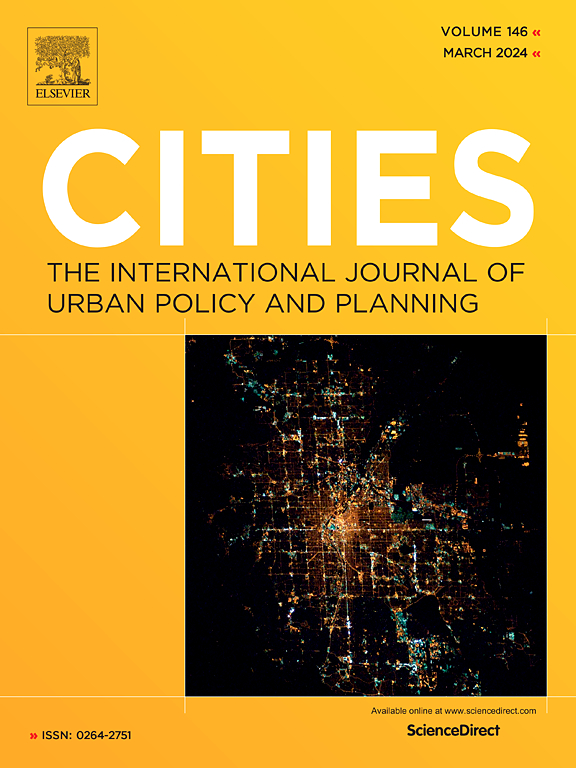社区避风港还是城市热点?城市公共绿地的社会生态类型学
IF 6
1区 经济学
Q1 URBAN STUDIES
引用次数: 0
摘要
在本文中,我们提出了一种多维城市公共绿地(PUGSs)类型的发展方法。该方法考虑了PUGS的三种环境:地点、空间和社会。以规模、土地覆盖多样性和受欢迎程度为空间文脉特征,可用性和连通性为空间文脉特征。从一个有代表性的调查数据被用来说明社会背景。该类型学应用于一个欧洲大城市及其周边城市,即华沙市区(波兰)。共鉴定330个pugs,并将其分为5类。描述连通性、土地覆盖多样性和流行度的变量对类型的区分效果最好。离居住地的距离并不重要。分析显示,大多数人更喜欢去大型的、多样化的、联系良好的pugs,并且走很远的路去那里。小而多样的区域几乎都是住在附近的人去的。小型的、单一的、没有联系的绿地很少有人光顾。建议的类型学有助于减少公共土地系统的复杂性,并根据数字和可测量的数据提供一个全面而简洁的方法,以制定有效的土地使用政策。本文章由计算机程序翻译,如有差异,请以英文原文为准。
Neighbourhood havens or city hotspots? Social-ecological typology of public urban green spaces
In this article, we propose a method for the development of a multidimensional typology of Public Urban Green Spaces (PUGSs). The approach takes account of three contexts of PUGS: site, spatial, and social. Size, land cover diversity and popularity were used to describe the site context of PUGSs, and availability and connectivity characterized the spatial context. Data from a representative survey was utilized to illustrate the social context. The typology was implemented for a big European city and its surrounding municipalities, i.e. Warsaw Urban Zone (Poland). 330 PUGSs were identified and grouped into five types. Variables describing connectivity, land cover diversity and popularity differentiated the types the best. Distance from the place of residence was not significantly important. The analysis revealed that most people prefer visiting large, diversified and well-connected PUGSs, and cover long distances to get there. Small and diversified areas are visited almost exclusively by those living nearby. Small, undiversified and unconnected green areas are poorly visited. The proposed typology helps to reduce the complexity of PUGSs and provides a comprehensive and concise approach based on numerical and measureable data, required to formulate effective land use policies.
求助全文
通过发布文献求助,成功后即可免费获取论文全文。
去求助
来源期刊

Cities
URBAN STUDIES-
CiteScore
11.20
自引率
9.00%
发文量
517
期刊介绍:
Cities offers a comprehensive range of articles on all aspects of urban policy. It provides an international and interdisciplinary platform for the exchange of ideas and information between urban planners and policy makers from national and local government, non-government organizations, academia and consultancy. The primary aims of the journal are to analyse and assess past and present urban development and management as a reflection of effective, ineffective and non-existent planning policies; and the promotion of the implementation of appropriate urban policies in both the developed and the developing world.
 求助内容:
求助内容: 应助结果提醒方式:
应助结果提醒方式:


